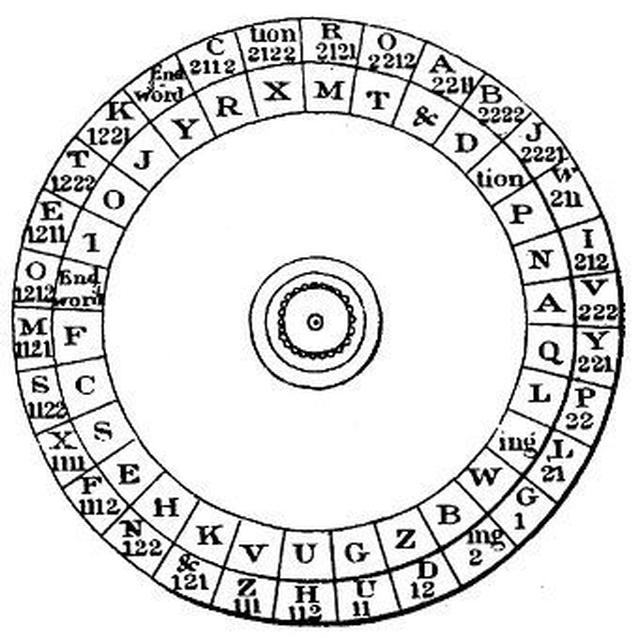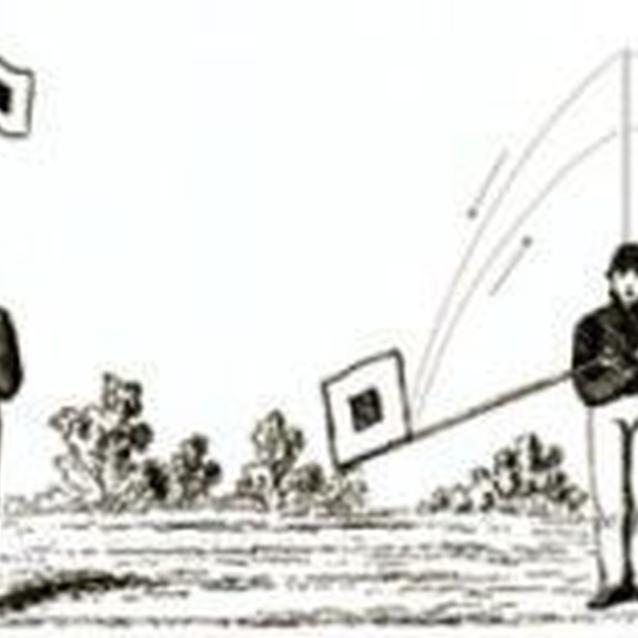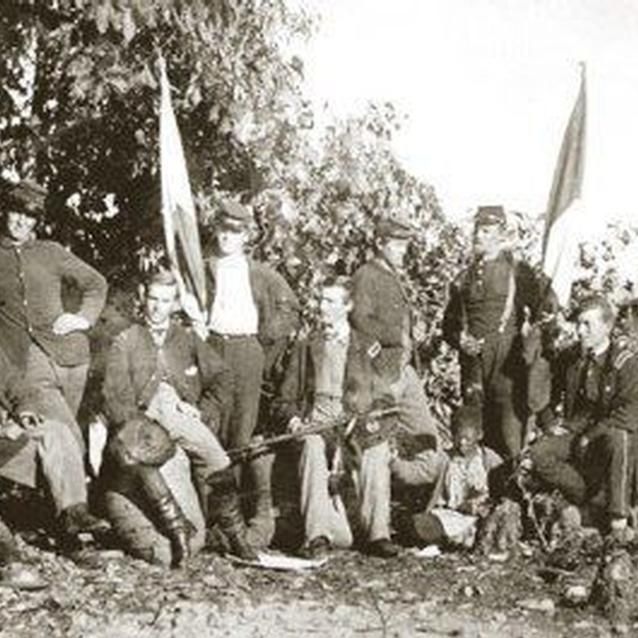Armies through the ages used drums, trumpets, and banners to communicate on the battlefield. These methods were used in the American Civil War as well. However, during the Civil War, both armies introduced a new signal technology that permitted rapid communication across the battlefield and farther. The new system used flags or torches to communicate.
"Look out for your left; you are turned." Wig-wag message from E. Porter Alexander at the First Battle of Manassas, believed to be the first time the system was used under combat conditions.
Wig-Wag
A signal system using flags and torches was invented by a U.S. Army surgeon, Major Albert Myer, in the 1850s and adopted by the U.S. Army in 1860. Myer's system permitted messages to be sent across areas where telegraph wires were unavailable. To the untrained observer, the flagman appeared to be merely "wig-wagging" a flag back and forth, and so the new system came to be known as the "wig-wag."
Major Myer became the U.S. Army's first chief signal officer. Myer's assistant during the development of the wig-wag system was an exceptional young lieutenant named Edward Porter Alexander, a Georgian who, when the war began, resigned his commission in the U.S. Army to fight for the Confederates. He helped organize, equip, and train the Confederate Signal Service. Thus, both armies came to use essentially the same signal system.
Codes and Ciphers

Brown, J. Willard, "The Signal Corps, U.S.A. in the War of the Rebellion"
Two forms of code were used: initially a four-element code and later, a two-element code. In the four-element code, movements of the flag conveyed the numerals 1, 2, 3, or 4 which were grouped to stand for letters and sometimes words or phrases. The letter "B" might be "1423," for example. By the end of the war, a two-element code was in use. Letters were formed using just the numerals 1 and 2, as dots and dashes were used in telegraphy. A "1" was indicated by moving the flag from the vertical to the sender's left; a "2" indicated by waving to the sender's right. So "A" might be "12" or "X" sent as "1221." The motion of the flag was an integral aspect of the wig-wag system, enhancing readability of the signal.
To encrypt the message, a signal disk made of two disks of brass or cardboard was used. One contained the alphabet, the other numeral combinations. By rotating the disk and changing the alignment of the numbers and letters, the codes could be easily changed.
A Signal Party on Duty in the Field

National Park Service
A U.S. Army signal party could be as small as an officer and two privates. Only the officer understood the code, and he was responsible for encoding and decoding messages. The enlisted men would flag the signals and assist in reading incoming signals which were given to the officer for translation. Signalmen were selected by examinations and were generally more educated. Commissioned officers were tested in reading and writing, composition, arithmetic, chemistry, natural philosophy, surveying and topography.
Not only were they expected to serve as communicators, they also assisted commanders with reconnaissance and surveillance by virtue of their location at high points on the terrain and their mobility. The life of a signalman could be behind the lines enjoying good food and the comfort of a commander's headquarters-or in advance of the army exposed to the elements in remote and isolated locations, experiencing hardship and danger.
Signal Stations During the Battle

Library of Congress
There were several U.S. signal stations on or near the Antietam battlefield. The most important, under Lt. Joseph Gloskoski, was located on Elk Mountain overlooking the field from the east. Lt. Gloskoski reported that during the battle he communicated with at least five different stations on the field. These were Maj. General George McClellan's headquarters at the Pry House; Maj. General Ambrose Burnside's headquarters on the Union left; and Maj. General Joseph Hooker's headquarters on the Union right. Additionally, he refers to "two stations in the center of our lines." One of these was possibly at the Roulette farm. The other may have been the station situated near the Miller farm.
Gloskoski's Elk Mountain station sent the most famous signal of the battle. Late in the afternoon this party observed Lt. General A.P. Hill's division of Confederates approaching the battlefield after its long march from Harpers Ferry. The Elk Mountain station sent an urgent message to Gen. Burnside, "Look well to your left. The enemy are (sic) moving a strong force in that direction."
Confederate signalmen were also active during the battle and official maps of the battlefield indicate a C.S.A. signal station was located behind the West Woods.
Last updated: August 23, 2017
